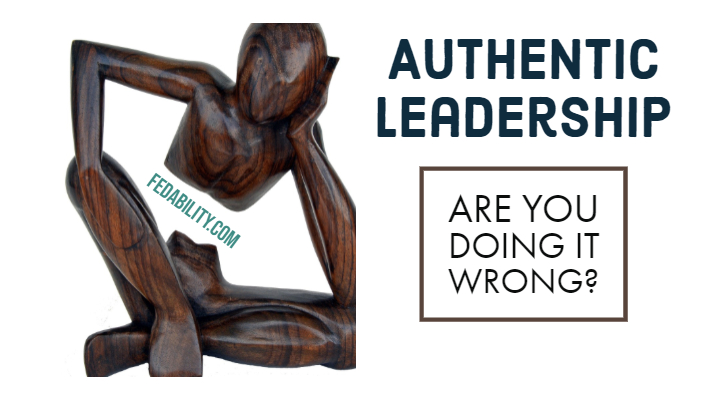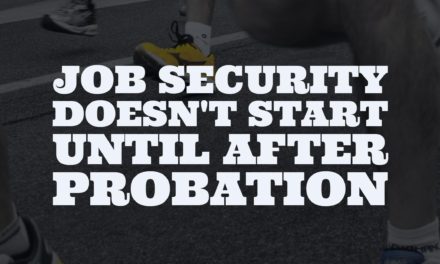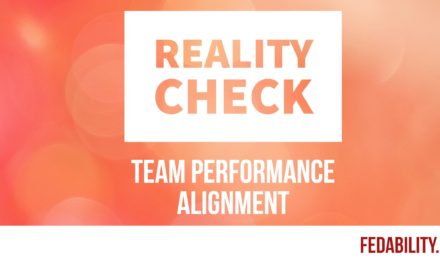If you use the phrase, “That’s just the way I am!” and call it authentic leadership …then you’re doing it wrong.
In our last post, I talked about leadership style. I posed the question of whether you can pick a leadership style. Or whether it is innately something you have. In answering that question, I made the point that some situations, some tasks, and most employees may need different things from you as a leader. And, as a result, you may need to lead differently based on those variables.
What I was describing is situational leadership. This concept of situational leadership was coined by psychologists Hersey and Blanchard in the mid-1970s. It’s an attractive approach because it adapts to the needs of the team, its members, and the task at hand.
More recently, in 2003 a landmark book called Authentic Leadership: Rediscovering the Secrets to Creating Lasting Value was published by Bill George. Since then, this book has been used to explain away that ‘authentic leadership’ is about being who you really are.
Authentic leadership is portrayed as not pretending to be something just to meet someone else’s expectations. Thus, the concept of situational leadership by definition seems inauthentic. Authentic leadership is sometimes used as a badge of honor to explain away their inner-jerkiness. Or, as a reason not to adapt to the needs of a team or team member.
But, that’s not really authentic leadership. That’s being a jerk and inflexible. And, it’s an excuse not to be a leader.
George has said that the point of his book is about having integrity and a deep sense of purpose. It is not a style. A leadership style, George says, is a manifestation of your character. And, so, you can adapt to the situation, the team, and its team members without being inauthentic. Rather, adapting on the basis of your desire to achieve a longer term vision and sense of purpose.
Dimensions of Authentic Leadership
There are 4 dimensions of authentic leadership. In knowing these 4 dimensions, it becomes glaringly obvious that being authentic does not mean that you don’t have to change.
These 4 dimensions include:
- Self-awareness – Awareness of how one thinks, behaves, and is perceived by others
- Internalized moral perspective – Conviction to personal values
- Balanced processing – Ability and inclination to consider multiple perspectives of an issue to assess information
- Relational transparency – Open in sharing/receiving information with others
Personal and professional values as a key to authentic leadership
Admittedly, the dimensions of authentic leadership aren’t particularly earth-shattering. Things like having self awareness, considering multiple perspectives of information, and sharing information are commonly mentioned in terms of being a good leader. Well, frankly, of being a good person even.
But, I seldom find someone who has stopped to consciously, deliberately think about their values.
One way to think about your values is to answer the question, “What is it that you are willing to ‘fall on your sword’ for?”. Or, “What would you be willing to lose your job over?”
Here’s a couple examples from people I’ve worked with and how authentic leadership helped guide them.
Example 1.
A woman complained that her supervisor required that she write meeting notes and then go to the supervisor’s office and report out on the meeting notes. The woman thought this was insane. Why report out on meeting notes when they could just be read? Because she thought this was ridiculous, the woman began avoiding the out-briefings. The relationship between the supervisor and the woman began to erode.
I asked the woman what she was working on that is really important to her. She described some of those things. It became clear that her work really mattered to her. And, that this was a particularly critical point to move her project forward.
I asked if her supervisor was someone that could help move this work forward, or prevent it from moving forward. The woman replied that, yes, her supervisor was in a position to help or hurt the project.
So I asked, “Are these out-briefings – annoying as they are – worth your project failing?”
Her final answer wasn’t immediate. But eventually, she admitted that her project was more important than taking a stand on these out-briefings. That she could deal with the annoyance in order to keep her relationship with her supervisor positive, and ensure her supervisor supported her in moving her project forward.
Example 2.
A man explained that his role in the agency was to analyze employee engagement data and report out on the results. His leadership was unhappy with the results and found it difficult to believe that he was analyzing the data accurately. So, the leadership team requested the password to the survey tool to be able to look at the data directly and analyze it themselves.
As is true in any agency that collects employee engagement data there is a lot that goes into communicating that the individual responses will be kept anonymous and confidential. And, typically, much goes into upholding this promise.
Add to this situation that the man is a psychologist, so he also has a professional responsibility to keep the data confidential.
So, despite repeated requests by leadership for the password, the man refused. The request went to his supervisor, who gave up the password as requested.
Although nothing happened to the man for refusing to give up the password, he was willing to deal with the consequences. Because the request directly conflicted with his personal and professional values. And, his trust in his direct supervisor and his higher leadership was forever shattered. As a result, he began seeking and eventually found a new job elsewhere.
Identifying your values
When I teach leadership classes, I often have the class complete an activity to identify their own values. Here’s the instructions to do this on your own.
- Review the list of possible values.
- Pick the top 10 values that resonate with you. The list isn’t exhaustive so feel free to add to the list if you feel something is missing.
- From that list of 10 values, reduce it to just 5 values.
- Now, from those 5 values, reduce it to just 3.
- Reflect on those 3 values you identified as most important to you.
My values are: excellence, autonomy, competence
Now, think back to a time where you felt incredibly frustrated or angry at work. Consider whether any of the values you identified were in conflict with the situation.
Chances are – they were.
When faced with a choice or difficult decision, I always recommend you reflect back on your values. Because when you do, the decision isn’t really all that difficult anymore. The actions you take to align to your values and the consequences of those actions – well, that can be more difficult. But, that’s what authentic leadership is all about.
And, being a leader is seldom easy when you’re doing it right.
Note: The above text does contain an affiliate link. I will receive a small commission if you choose to purchase through that link. However, you will not pay any extra.





